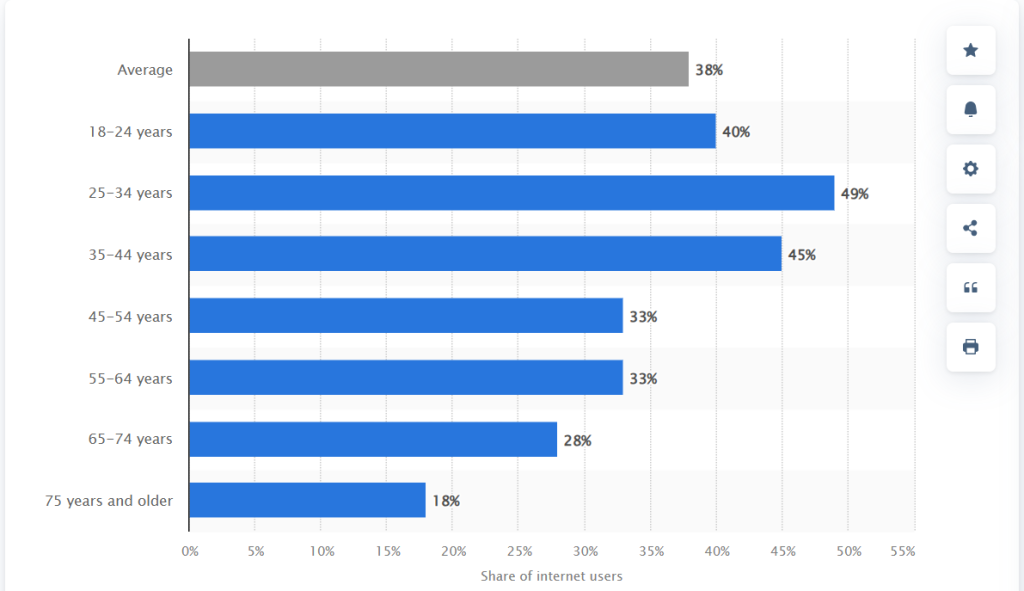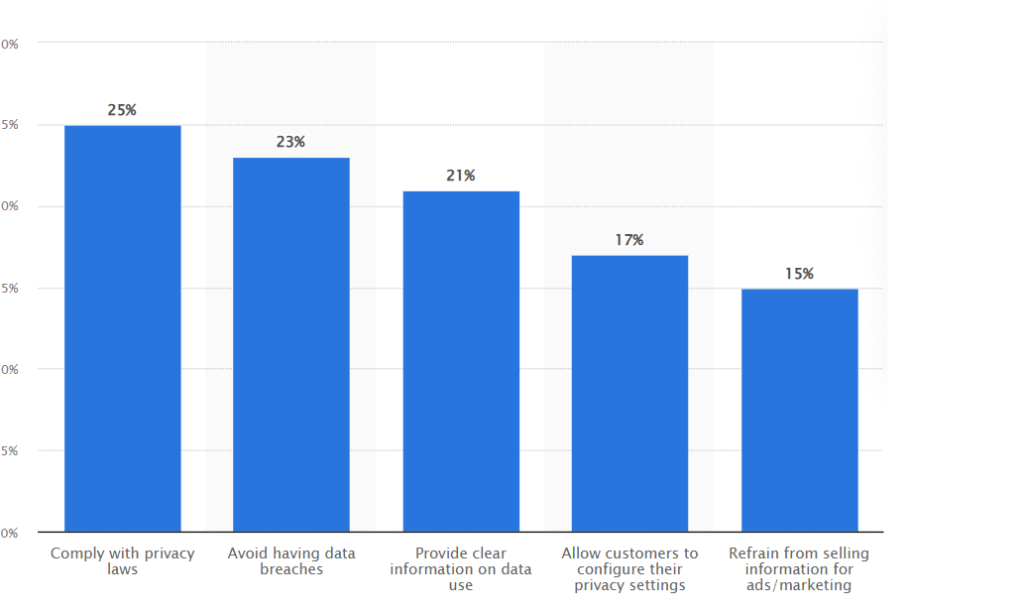
Introduction
With Web 2.0, social media is the space, where we can post anything and everything we want, whcih come with a caution lest we do not harm anyone. Situations have become more complicated than before, because hacking of personal information is done as Web 2.0 is the network that spans all the connected devices.
Moreover, one has to be cautious regarding the political and regulatory choices which are related to the digital technologies. This is because these causes profound impacts on the freedom of expression, access to information, issues related to privacy and human rights. Therefore, concerns becoming the critical issues, starting from everyday users, policymakers to the civil society at large. This blog is going to focus on the key aspects of the issues of concern that digital users face that is Privacy, Security and Digital Rights.
Understanding Privacy in the Digital Age
Privacy is described as the space that one owns, that is one’s personal space in this vast society. However, in the digital age, the ambit of privacy expands to having control on the personal information that one has. Every time we use log in to our social media accounts or online services, we live behind certain data traces.
Though this digital trace might seem an unconscious activity, but this is very much consciously done. For instance, once we add photographs, react to a post or write comments on the timelines in our social media accounts, it leaves the digital trace there. This might even happen when our friends or family members interact with us and tag us into their pictures- their address books get synchronized with our digital addresses.
In the modern digital context, the use of privacy gets applied to the use of modern technologies without any fret and worry. If the cornerstone of trust gets sidelined, then it would be very difficult to measure and calculator the things that we should do online.
Therefore, it has become important to be careful, because as much trivial these digital traces might sound, they become meaningful and act as the technical process to identify the person who is associated with that particular action.

Understanding the challenges of maintaining of Privacy
As much as the awareness about privacy is spreading worldwide, it is becoming increasingly difficult to maintain this privacy issues. As evident from the Figure 1, the graph shows that the least aware people regarding this digital privacy issues are those belonging to septuagenarian and above. The most aware age group seems to belong from the age group of young adults (25-34 years) and adults (35-44 years).
Now, this is pretty natural since the older group does not have the nuanced technological understanding of how to protect their data and how data privacy is hampered. Moreover, in the past, the issue of safeguarding privacy was simple as unfriending someone or blacklisting the harassing calls. For instance, the issue of not giving OTP has become so common being broadcasted by news, memes and social media platforms that even older people think twice before giving their OTP.

The issues of protecting privacy have become more complex than ever before. Smartphones, apps and websites often collect data, which users are unaware of. Even people pretend to be someone’s friend and on the pretext of giving money, exhort the entire bank balance once they get access of it. As shown in Figure 2, the husband is showing concern and says for an identity verification, even when the wife says that their college friend wants to send them money.
Issue regarding data privacy have become so very complicated, that with the help of artificial intelligence (AI), scammers are able to replicate the voice and even face of the known people. By using the technology of deepfake, the audio or maybe the footage of someone can be used for appropriately recreating the movement and voice of someone.
Though being digitally aware is important, but with the advancement in the hacking skills it has become very difficult to identify the real scammer. Once if the identity is compromised, it is difficult to avoid embarrassment and what not.
Power of Digital Platforms
Social media platforms is the space where people wither reconnect or bond with completely new people, they communicate and exchange memes, images, files and what not. There does not exist a thing as neutral platform because people themselves chose their own admins and they make the general rules of the group.
Moreover, all platforms formulate own rules according to their technical design, which helps in formulating the types of content people should post online. Social media platforms have become an important part of our everyday lives, in establishing a democratic space, for the ordinary people to express themselves.
The power of digital platforms has made it more important than ever before to secure the digital rights. Therefore, it is important for the social media platforms, e-commerce and e-banking sites to protect the data privacy of the customers by curating extra levels of protection.

Platform Power incorporated by Corporate Platforms
The main source of the leakage of information are the e-commerce sites such as Amazon, social media platforms as in Facebook and Instagram and so on and so forth. This asymmetrical data control that is the concentration of data in the hands of few people has been the reason of for data breaches which needs to be stopped. This is because they not only provide products, they also set the rules and the terms and conditions that how the data should be collected, used, and protected.
Moreover, these tech-giants have the platform power which the individual users lack. For instance, in case of the Cambridge Analytica scandal which is the company owned by the fund billionaire Robert Mercer and headed by Steve Bannon, who is the key adviser of Donald Trump, it has been revealed that the large scale data in Facebook quizzes has been used for political purposes- particularly to target the voters who are Americans.
For instance, according to the data record taken by the Federal Competition and Consumer Protection Commission (FCCPC) referred Meta has been disregarding the privacy laws as in case of Nigeria, they were collecting 44 metadata points, as compared to the four metadata points being collected by Signal and Telegram, which provide similar services. Such instances have been taken very seriously, because Meta were depriving their users from having a fair and transparent mechanism from having the right and control over their personal data. Moreover, they were accumulating the necessary data with non-essential data. Such instance shows that how a tech giant can directly manipulate the users’ data which might be a part on online discrimination.
Therefore, it becomes important for the platform heads to see that how the private data is being breached through their platforms without the knowledge of the users. As shown in Figure 3, many e-commerce sites have taken steps towards protecting data of their users, by providing clear information on data usage, allowing the customers from configuring their own privacy settings and the most important thing, not to sell the data of the users to the advertisements and marketing agencies.

Data Breaches in E-Platforms
Though it is very easy for us to say, that it is very unlikely for larger platforms to have data breaches as they have higher level of data protection, encrypted methods of promising to keep the information of the data safe and a powerful cyber cell. Still there remains the loopholes, have you pondered over the reason?
Well, it is easier to say than to be done, because as it is said that there comes a baggage of added responsibility with greater powers. Therefore, large data bases with personal information becomes difficult for the companies to handle and using these loopholes for their profit, the hackers steal the information as it is evident in the figure 4. Sometimes, the e-companies say that the amount of personal information is been used is for facilitating their user experience, for instance, whether it be social media feeds or simply the shopping history.
According to a report published by the Guardian, almost 200 million Amazon Prime users are the richest source of the user data, because the algorithms can infer the personality of the customers, their tastes and probably what type of dress, book or for that matter the next thing that they are going to buy. Though, Amazon cites that they do not sell personal information such as names or email addresses, but the fact that it lets other companies such as Google and Facebook to tack their users, which can be regarded as a concerning issue.
A small group of companies have accumulated the dominance of being the leading economic powers as in Google, Apple, Amazon, Facebook, and Microsoft and being the gatekeepers, they access to markets and control all the user information. This information is often collected by advertisements which has an issue of data breaches.
Advertisements remain as a strategy to lure the costumers for using the service or buying a particular product. The purpose of advertisement is to inform the public and help in making the conscious decision-making. However, it becomes problematic when these advertisements streamline differences in providing racial and gender discrimination.
Advertisements target Digital Rights
Advertising platforms in the bid to reach the potential employees and often make discrimination based on age, gender and race. Can you think that this targeting has become such a larger issue that the advertisers misuse targeting tools even to exclude people from seeing job ads?
From a study conducted for studying the advertisements in Facebook, it has been known that there are two components of advertisements, that is the ad system targeting and the ad delivery. During the ad creation, the advertiser choses the targeting parameters that determines which kinds of users would see the advertisement and even during ad delivery, a subset of the users are being targeted by the advertisers to see it.
The discriminatory practices of making ads visible based on gender, race and age are known as dark ads. These targeted advertisements therefore raise the questions of inclusion, accessibility and concern regarding the digital rights.

Digital rights as Extensions of Human Rights
Understanding the importance of digital rights is important, because often it is found that human beings are targeted through the matters of online abuse and hate speech. The issues of privacy are very fragile and it exists not only as broad national and linguistic cultural differences, but even within communities.
As evident in figure 5, the social media users respond differently to a singular incident of racism faced by an individual. Therefore, it can be understood that similarly these issues of privacy, consent and discrimination is perceived by people differently based on their individual backgrounds, but it is essential to preserve one’s digital rights.
Digital rights can be understood as the certain fundamental rights in the online environment, which includes having the privacy of the personal data, the rights to express online freely, to have access over information and to use the internet without unnecessary surveillance. Therefore, in the digital world, it has become important to understand and protect digital rights.
Conclusion
It can be concluded that social media has given the space for exercising the freedom of expression, but there lies a problem with the issue of privacy and digital rights.
Through this blog we understood that privacy, security and digital rights are almost interchangeable words in today’s time and to understand and preserve them have become important than ever before.
References
Flaherty, K.O. (2022, February 27). The data game: what Amazon knows about you and how to stop it. The Guardian. https://www.theguardian.com/technology/2022/feb/27/the-data-game-what-amazon-knows-about-you-and-how-to-stop-it
Cadwalladr, C. and Harrison, E.G. (2018, March 17). Revealed: 50 million Facebook profiles harvested for Cambridge Analytica in major data breach. The Guardian. https://www.theguardian.com/news/2018/mar/17/cambridge-analytica-facebook-influence-us-election
Flew, T. (2022). Regulating platforms by Journal of Asia-Pacific Pop Culture. Polity Press.
Hepp, A., Breiter, A., & Friemel, T. N. (2018). Digital Traces in Context| Digital Traces in Context—An Introduction. International Journal of Communication, 12, 439-449. https://ijoc.org/index.php/ijoc/article/view/8650
Hughes, A. (2023, August 26). AI: Why the next call from your family could be a deepfake scammer. BBC. https://www.sciencefocus.com/future-technology/ai-deepfake-scam-calls
Karppinen, K. (2017). Human rights and the digital. In The Routledge companion to media and human rights (pp. 95-103). Routledge.
Marwick, A. E. (2018). Privacy at the margins| understanding privacy at the margins—introduction. International Journal of Communication, 12 (9), 1157–1165. https://ijoc.org/index.php/ijoc/article/viewFile/7053/2293
Nagaraj Rao, V., & Korolova, A. (2023.). Discrimination through image selection by job advertisers on Facebook. ACM Digital Library, 1772-1788. https://doi.org/10.1145/3593013.3594115
Okenyi, S. C. (2024). Meta: The Cost of Strict Data Privacy Regime in the Era of Technology-Driven Economy. SSRN Journal.
Suzor, N. P. (2019). Who makes the rules? In Lawless: The secret rules that govern our digital lives (pp. 10–24). Cambridge University Press.

Be the first to comment